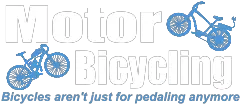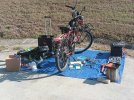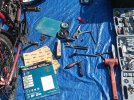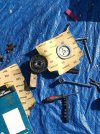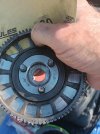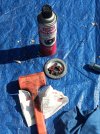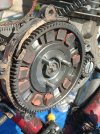nimblebee
Member
I've got a clutch shaft replacement coming up today.
Reviewed videos before starting the job, just in case there's something I'm missing.
One thread said something that I hadn't heard anywhere else: use sandpaper to "rough up" gripping surfaces of clutch pressure plates for superior traction.
One can hear anything on the internet; doesn't make it true.
Maybe nobody else has heard of roughing pressure plates? That would make me suspicious as to truth/efficacy of procedure.
How does one sort out the liars? Well, ask around and see what other people have experienced.
Doesn't mean you're necessarily going to find the definitive answer, but it's a good start, knowing what other people have experienced.
Part describing roughing pressure plates starts about 4 minutes 19 seconds into video:
Reviewed videos before starting the job, just in case there's something I'm missing.
One thread said something that I hadn't heard anywhere else: use sandpaper to "rough up" gripping surfaces of clutch pressure plates for superior traction.
One can hear anything on the internet; doesn't make it true.
Maybe nobody else has heard of roughing pressure plates? That would make me suspicious as to truth/efficacy of procedure.
How does one sort out the liars? Well, ask around and see what other people have experienced.
Doesn't mean you're necessarily going to find the definitive answer, but it's a good start, knowing what other people have experienced.
Part describing roughing pressure plates starts about 4 minutes 19 seconds into video:
Last edited:
